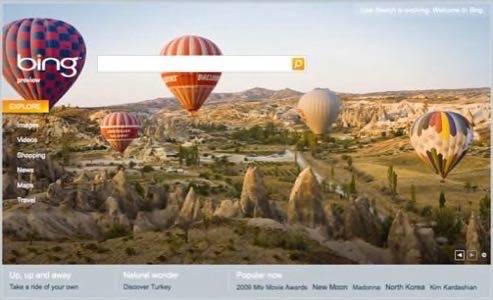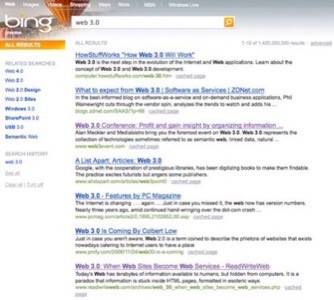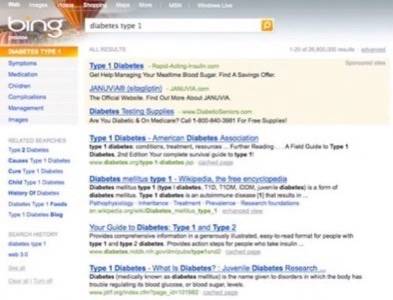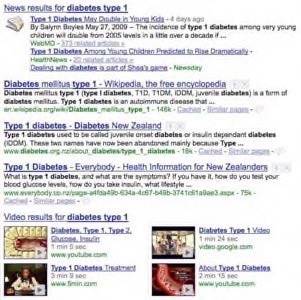Microsoft’s new search engine Bing unexpectedly went live tonight, including a re-direct from http://www.live.com – previously Microsoft’s ‘personalized start page’ destination. So search has usurped a Netvibes-like start page as Microsoft’s default homepage for its web services.

In last week’s launch announcement, Bing was being bandied about as Microsoft’s latest attempt to steal market share away from Google. In particular, according to Microsoft, Bing will focus on four verticals: making a purchase decision, planning a trip, researching a health condition, and finding a local business. We took the new search engine for a test run tonight.
A note about the branding. Microsoft isn’t known for its clever (or even coherent) branding, but we truly wonder about the decision to place images of hot air balloons on the bing.com homepage. What is that trying to tell us – that Bing is powered by hot air?

In any case, a search for our current topic de jour, “web 3.0”, brought up fairly similar results for Google and Bing. Although, frankly, we found that Google’s Universal Search, which mixes different types of results together in one page (such as video in the example below), gave us a better search experience here. In Bing, you have to click ‘Videos’ to get multimedia about Web 3.0.
Bing – “web 3.0”

Google – “web 3.0”

How about testing one of the four areas in which Bing is supposed to be focusing? Let’s pick ‘searching for a health condition’. My favorite search is for “diabetes type 1”, so I keyed that into both search engines:
Bing – “diabetes type 1”

Google – “diabetes type 1”

The main difference between the two search engines is that Bing offers more options on the left, including special sections for symptons, medication, children, etc. It also offers ‘related searches’, which is typically helpful with health-related searches.
As usual, Google offers a straight list of results, but again with Universal Search (in this case news and video results inline with normal webpage results). With Google you can get more options, but you have to click “Show Options…” – and we’re not sure how many users will do this. To be honest, I haven’t once clicked it in my daily Google searches since it went live a couple of weeks ago.
So, Microsoft’s Bing does hold promise in this type of search. Maybe it’s not all hot air after all…

















